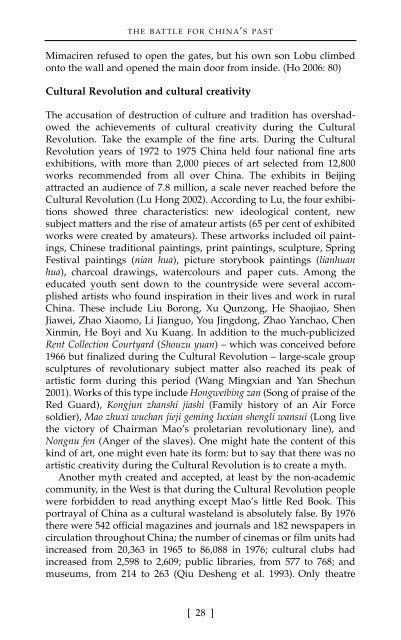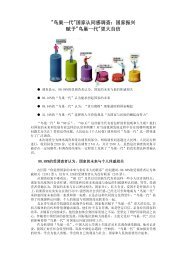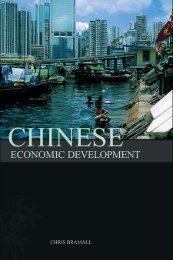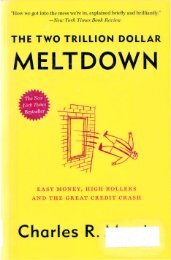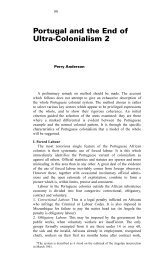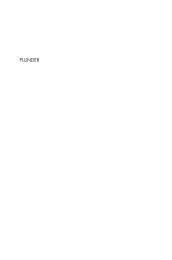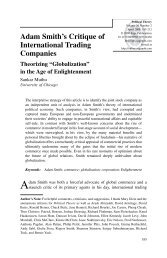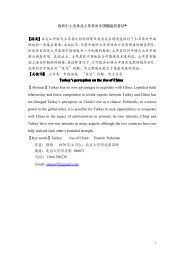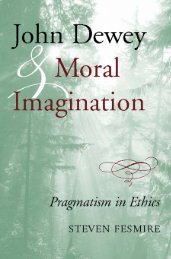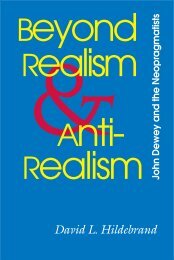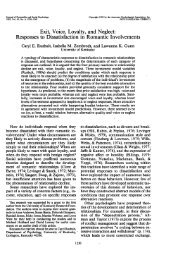Battle for China's Past : Mao and the Cultural Revolution
Battle for China's Past : Mao and the Cultural Revolution
Battle for China's Past : Mao and the Cultural Revolution
You also want an ePaper? Increase the reach of your titles
YUMPU automatically turns print PDFs into web optimized ePapers that Google loves.
THE BATTLE FOR CHINA’ S PAST<br />
Mimaciren refused to open <strong>the</strong> gates, but his own son Lobu climbed<br />
onto <strong>the</strong> wall <strong>and</strong> opened <strong>the</strong> main door from inside. (Ho 2006: 80)<br />
<strong>Cultural</strong> <strong>Revolution</strong> <strong>and</strong> cultural creativity<br />
The accusation of destruction of culture <strong>and</strong> tradition has overshadowed<br />
<strong>the</strong> achievements of cultural creativity during <strong>the</strong> <strong>Cultural</strong><br />
<strong>Revolution</strong>. Take <strong>the</strong> example of <strong>the</strong> fine arts. During <strong>the</strong> <strong>Cultural</strong><br />
<strong>Revolution</strong> years of 1972 to 1975 China held four national fine arts<br />
exhibitions, with more than 2,000 pieces of art selected from 12,800<br />
works recommended from all over China. The exhibits in Beijing<br />
attracted an audience of 7.8 million, a scale never reached be<strong>for</strong>e <strong>the</strong><br />
<strong>Cultural</strong> <strong>Revolution</strong> (Lu Hong 2002). According to Lu, <strong>the</strong> four exhibitions<br />
showed three characteristics: new ideological content, new<br />
subject matters <strong>and</strong> <strong>the</strong> rise of amateur artists (65 per cent of exhibited<br />
works were created by amateurs). These artworks included oil paintings,<br />
Chinese traditional paintings, print paintings, sculpture, Spring<br />
Festival paintings (nian hua), picture storybook paintings (lianhuan<br />
hua), charcoal drawings, watercolours <strong>and</strong> paper cuts. Among <strong>the</strong><br />
educated youth sent down to <strong>the</strong> countryside were several accomplished<br />
artists who found inspiration in <strong>the</strong>ir lives <strong>and</strong> work in rural<br />
China. These include Liu Borong, Xu Qunzong, He Shaojiao, Shen<br />
Jiawei, Zhao Xiaomo, Li Jianguo, You Jingdong, Zhao Yanchao, Chen<br />
Xinmin, He Boyi <strong>and</strong> Xu Kuang. In addition to <strong>the</strong> much-publicized<br />
Rent Collection Courtyard (Shouzu yuan) – which was conceived be<strong>for</strong>e<br />
1966 but finalized during <strong>the</strong> <strong>Cultural</strong> <strong>Revolution</strong> – large-scale group<br />
sculptures of revolutionary subject matter also reached its peak of<br />
artistic <strong>for</strong>m during this period (Wang Mingxian <strong>and</strong> Yan Shechun<br />
2001). Works of this type include Hongweibing zan (Song of praise of <strong>the</strong><br />
Red Guard), Kongjun zhanshi jiashi (Family history of an Air Force<br />
soldier), <strong>Mao</strong> zhuxi wuchan jieji geming luxian shengli wansui (Long live<br />
<strong>the</strong> victory of Chairman <strong>Mao</strong>’s proletarian revolutionary line), <strong>and</strong><br />
Nongnu fen (Anger of <strong>the</strong> slaves). One might hate <strong>the</strong> content of this<br />
kind of art, one might even hate its <strong>for</strong>m: but to say that <strong>the</strong>re was no<br />
artistic creativity during <strong>the</strong> <strong>Cultural</strong> <strong>Revolution</strong> is to create a myth.<br />
Ano<strong>the</strong>r myth created <strong>and</strong> accepted, at least by <strong>the</strong> non-academic<br />
community, in <strong>the</strong> West is that during <strong>the</strong> <strong>Cultural</strong> <strong>Revolution</strong> people<br />
were <strong>for</strong>bidden to read anything except <strong>Mao</strong>’s little Red Book. This<br />
portrayal of China as a cultural wastel<strong>and</strong> is absolutely false. By 1976<br />
<strong>the</strong>re were 542 official magazines <strong>and</strong> journals <strong>and</strong> 182 newspapers in<br />
circulation throughout China; <strong>the</strong> number of cinemas or film units had<br />
increased from 20,363 in 1965 to 86,088 in 1976; cultural clubs had<br />
increased from 2,598 to 2,609; public libraries, from 577 to 768; <strong>and</strong><br />
museums, from 214 to 263 (Qiu Desheng et al. 1993). Only <strong>the</strong>atre<br />
[ 28 ]


